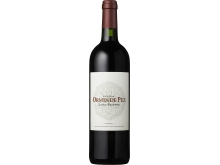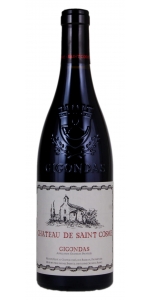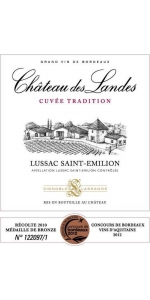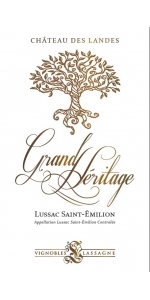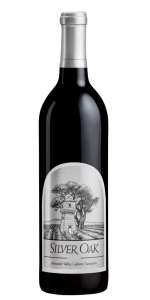Ormes de Pez Saint Estephe 2020
6 bottles with free shipping for: $360.00
12 bottles with free shipping for: $660.00
| BUY MORE! SAVE MORE! | ||||||||||||||||||||
|
| Country: | France |
| Region: | Bordeaux |
| Winery: | Ormes de Pez |
| Grape Type: | Merlot |
| Vintage: | 2020 |
| Bottle Size: | 750 ml |
Ormes de Pez Saint Estephe is made from 54% Merlot, 38% Cabernet Sauvignon, 4% Cabernet Franc and 4% Petit Verdot.
Château Ormes de Pez 2020 displays deep garnet-purple color with notes of plum preserves and dark berries, plus hints of graphite. Nice chewiness to the texture and lovely freshness, finishing on a lingering fragrant-earth note.
Ormes de Pez has been part of the Medoc landscape since the 18th century. At the time of the French Revolution, the current property was called the Domaine de Pez (meaning ''peace'' in the local dialect). As for the elms (''ormes'') that have appeared on the bottle labels since 2003, they grew on the grounds of the domaine until this mythical variety of tree ceased to grow in Europe in the 1950's.
From the 19th century onwards, the château had numerous owners (Southard and Pieck, Berthé, Carrère, Alibert, Meiners and Allemand, Eschenauer, Johnson, Miaihle), before becoming a part of the Cazes family. In around 1880, Marie Cazes married Jean Guillou, the Ormes de Pez Cellar Master. He was sadly killed at the very beginning of the Great War and so Marie, a woman of great character, subsequently took over the business. Her brother Jean-Charles Cazes purchased Ormes de Pez in 1940. Jean-Michel Cazes later redeveloped and modernised the traditional XVIII century buildings in the early 80's.
Château Ormes de Pez lies 60 km from Bordeaux on the Médoc peninsula. It benefits from a mild ocean climate thanks to its proximity to the estuary and the Atlantic ocean. Its 40 hectares of vineyards consist of two very distinct terroirs: the Cabernets thrive on the gravelly parcels composed of quartz and rolled pebbles whereas Merlot is best-suited to the cooler, sandy-clay parcels. These parcels have good drainage properties and are representative of the Saint-Estèphe appellation. Vines are planted in accordance with the traditional Médoc planting ratio. Cabernet Sauvignon counts for 54% of plantings, complemented by 37% Merlot, 7% Cabernet Franc and 2% Petit Verdot.
Meyney Saint Estephe is made from 52% Cabernet Sauvignon, 35% Merlot and 13% Petit Verdot.
The vineyards planted on a perfectly drained siliceous gravel soil provide ideal conditions for the maturity of the grapes and result in a very deep black color wine with spicy notes and a distinguished style.
The 2020 vintage embodies what Bordeaux does best - a great classic vintage, complete, complex, rich and unctuous.
Review:
"Attractive aromas of ripe dark berries with dark spices, walnut, chocolate nibs and bark. Medium- to full-bodied with a dense, velvety texture and plush, fine-grained tannins. Very textural and creamy with a deep core of ripe dark fruit and a succulent finish. Try after 2025."
- James Suckling, 93 pts
Chateau de Saint Cosme Gigondas is made from 70% Grenache, 15% Mourvèdre, 14% Syrah, 1% Cinsaut.
The wine shows intense blackberry and fig fruit with licorice, violets, and charcoal on the finish. It is remarkably fresh and finessed given the sun and warmth of the southern Rhône. The unique micro-climate combined with 60-year-old vines and traditional winemaking make Château de Saint Cosme Gigondas the benchmark wine of the appellation.
Review:
Leading off the Gigondas, the base 2020 Gigondas has lots of black raspberry, ground pepper, and violets notes as well as a round, supple, silky style on the palate. It should be approachable on release, yet it has plenty of mid-palate depth as well as tannins, and I have no doubt it will evolve for 20 years if properly stored.
-Jeb Dunnuck 91-93 Points
Landes Cuvee Tradition Lussac Saint Emilion is made from 80% Merlot, 15% Cabernet Sauvignon and 5% Cabernet Franc
Color: deep ruby intense color.
Aroma: racy and aromatic nose with aromas of ripe red fruit.
Taste: this wine is silky, round and smooth first taste, with aromas of raspberries, and blackcurrant, powerful and complex finish.
Landes Grand Heritage Lussac Saint Emilion is made from 100 percent Merlot.
First vintage of this wine was 2010 to pay tribute to the founding father of Chateau des Landes - Paul Lassagne. He gave the family a great legacy of terroir, passion and know-how to craft this great cuvee produced from a selection of the finest grapes that are vinified and aged in 600 liter French oak foudres, just like it was done in the old days. The resulting wine is complex and aromatic offering bold aromas and flavors of dark berries, floral tones, spice, oak and vanilla. The palate is onctuous and powerful, well structured with ripe tannins. Well balanced and a complex finish.
Average age of the Vines: 60 years Yield : 50 hectoliters / hectare. Grape picking: harvest by machine. Vats: Stainless steel thermoregulated and computerized. Fermentation: 45 to 50 days with a final 35°C warm steeping. Winemaking: Malolactic fermentation in new oak barrel. Ageing: 16 months in new French Oak barrels from Allier and Limousin. Annual production: 10,000 bottles. (833 cases)
Domaine Michel Magnien has evolved into a Burgundy producer of a singular style and philosophy from cellars located in the village of Morey-Saint-Denis. In 1993, Frédéric Magnien persuaded his father Michel to begin domaine bottling. The domaine is now certified biodynamic by Demeter and the wines are produced without the use of new oak.
The domaine’s 45 acres are spread across the villages of Morey-Saint-Denis, Gevrey-Chambertin, Chambolle-Musigny, and Vosne Romanée, with holdings in several premier cru and grand cru vineyards. These include the grand crus Clos de la Roche, Clos Saint-Denis, and Charmes-Chambertin. Frédéric Magnien maintains an average vine age of 50 years.
Morey-Saint-Denis 1er Cru "Climats d'Or" is a blend of five premier crus in the village of Morey-Saint-Denis: Cheseaux, Charrières, Clos Baulet, Chaffots, Monts Luisants. The wine was fermented with indigenous yeasts in stainless steel tanks followed by several months aging in half terracota amphora & half used pièce. Around 20% whole clusters were included in the cuvée.
Morey-Saint-Denis 1er Cru "Climats d'Or" combines the structure of Gevrey-Chambertin with the perfume of Chambolle-Musigny. This wine shows fresh red berries on the nose with notes of violets, spice, and earth. Old vines and heavier soils give this wine weight and richness on the palate.
Red Burgundy might be the world’s most flexible food wine. The wine’s high acidity, medium body, medium alcohol, and low tannins make it very food friendly. Red Burgundy, with its earthy and sometimes gamey character, is a classic partner to roasted game birds, grilled duck breast, and dishes that feature mushrooms, black truffles, or are rich in umami.
Silver Oak Alexander Valley Cabernet Sauvignon is made from 95.2% Cabernet Sauvignon, 2.5% Cabernet Franc, 1.9% Merlot, 0.4% Petit Verdot
The Silver Oak Alexander Valley Cabernet Sauvignon 2019 has notes of red cherry, raspberry, blackberry, iris, vanilla and clove. Ruby in color, this elegant wine has great acidity and lift on the mid-palate. Black currant and warm baking spices linger with a deep and fruity finish. It will provide drinking pleasure through 2047 given proper cellaring.
Review:
Silver Oak's 2020 releases of Napa and Alexander Valley Cabernets are downright impressive. Tasted four years after the fires, in September of 2024 at the Alexander Valley winery, neither wine showed any sign of the hardened tannic structure or overwrought fruit often associated with the vintage. Instead, these wines remain true to Silver Oak’s signature style, with blackcurrant, fig, and plum fruits layered with white pepper, sweet cedar, and coriander spice. Medium-bodied, with sculpted tannins that persist through the lengthy finish, the Alexander Valley Cabernet in particular retains all the hallmarks of a balanced, inviting, and vibrant Silver Oak red.
-Decanter 94 Points
Truly gorgeous, fruity, velvety and enjoyable for a full-bodied cabernet. It is rich in blueberries, cherry cream, black cherries and raspberries on the palate, with very smooth, layered tannins and a soothing mouthfeel. So easy to drink now, but it will age well, too.
-James Suckling 94 Points
- back
Intense violet, hints of lavender, black cherry, fresh leather and spicy flavors (white pepper and clove), rich and concentrated with a lingering spicy finish. Will age gracefully for several decades.
Review:
Morlet doesn’t make much of it, but their Syrah is beautiful and well worth seeking out. The 2018 Syrah Bouquet Garni comes from the cool climate, higher elevation Bennett Valley in Sonoma and offers a big, exotic nose of blackberry and blackcurrant fruits as well sandalwood, dried flowers, new leather, and white pepper. The fruit is ripe and opulent, yet it still holds onto loads of classic cooler-climate Syrah gaminess and peppery notes. Full-bodied on the palate, it’s balanced and has a lively, clean texture, beautiful depth of fruit, and a great finish. Enjoy bottles any time over the coming decade.
-Jeb Dunnuck 97 Points
Boroli's Barolo is made by a special combination of careful grape selection, precise destemming, and long mascerations with submerged cap. The barrels used to age this wine are very carefully chosen by the winemaker.
Clear bright ruby color with very light garnet red reflections; intense and persistent aroma of red fruit with notes of plum and cherry. A pleasant aroma of wood is noticeable after the fruity aroma, anticipating the full taste of a great wine suitable for long lasting life. A succulent, rich, full-bodied and pleasant taste emerges after the woody one, with the presence of slightly ripe red fruit.
Barolo pairs perfectly with rich dishes such as roasted meats and pasta with truffles.
Review:
A relatively easy-drinking Barolo. Layered fruit on the nose with strawberries and red cherries, together with violets and some licorice. On the medium-bodied palate there’s a light frame of dusty tannins and a sense of freshness. Simple yet precise.
-James Suckling 91 Points

